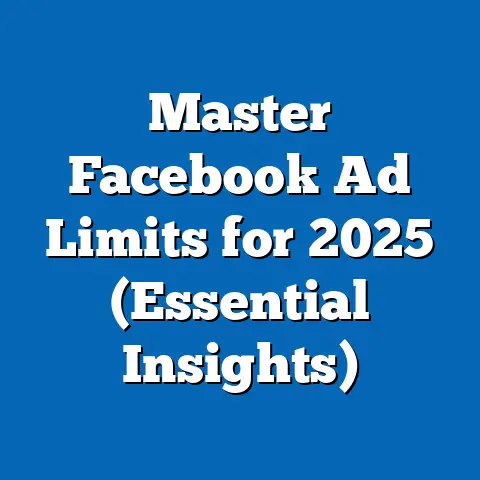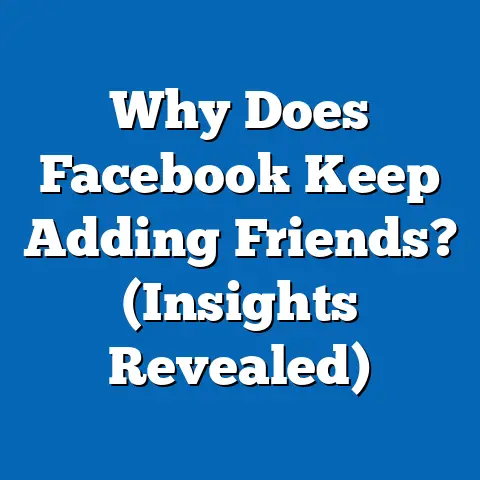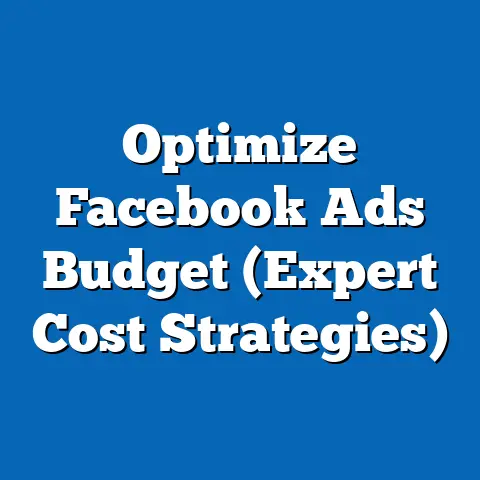Unlocking Facebook’s Ad Library (Game-Changing Insights)
Ever scrolled through Facebook and seen the same bizarre ad for, say, a glow-in-the-dark toilet seat, pop up again and again? You might wonder, “Who on earth is buying this thing?!” That’s the wild, sometimes bewildering, world of online advertising. But beneath the surface of questionable product ads and perfectly curated influencer campaigns lies a powerful tool: Facebook’s Ad Library. Think of it as a peek behind the curtain, a treasure trove of insights just waiting to be unlocked by savvy marketers and advertisers. In this guide, I’ll show you how to use it.
The Facebook Ad Library isn’t just a repository of ads; it’s a window into the strategies, creative approaches, and targeting tactics of businesses across the globe. Whether you’re a seasoned marketing pro or just starting out, understanding how to navigate and leverage the Ad Library can be a game-changer for your Facebook advertising efforts. So, let’s dive in and unlock the secrets it holds!
Section 1: The What and Why of Facebook’s Ad Library
Let’s start with the basics. What is the Facebook Ad Library, and why should you care?
Defining the Facebook Ad Library
Simply put, the Facebook Ad Library is a publicly accessible database of all active and inactive ads running across Meta’s platforms, including Facebook, Instagram, Messenger, and Audience Network. It’s essentially a searchable archive of advertisements, providing transparency into who’s advertising what and where.
I remember the first time I stumbled upon the Ad Library. I was working on a campaign for a local bakery and wanted to see what other bakeries in the area were doing on Facebook. I was blown away by the sheer volume of ads I could access – everything from simple image ads promoting daily specials to elaborate video ads showcasing custom cake designs. It was like having a secret weapon for competitive research.
The Purpose of the Ad Library
The Ad Library serves several important purposes:
- Transparency: It promotes transparency in advertising by allowing anyone to see the ads being run by a particular page or advertiser. This is especially important for political and issue-based advertising, where transparency is crucial for maintaining a fair and informed public discourse.
- Competitive Analysis: As I mentioned earlier, it’s an invaluable tool for competitive analysis. You can see what your competitors are advertising, how they’re targeting their audience, and what kind of messaging they’re using.
- Trend Spotting: By analyzing the ads in the Ad Library, you can identify emerging trends in advertising, such as new ad formats, creative styles, and targeting techniques.
- Inspiration: Sometimes, you just need a little inspiration. The Ad Library can be a great source of ideas for your own ad campaigns.
A Brief History: The Road to Transparency
The Ad Library didn’t just appear out of thin air. It’s the result of a long and sometimes bumpy journey toward greater transparency in online advertising.
In the wake of the 2016 US presidential election, Facebook faced intense scrutiny over the role its platform played in spreading misinformation and influencing voters. Concerns were raised about the lack of transparency in political advertising, with critics arguing that it was too easy for bad actors to anonymously run ads designed to manipulate public opinion.
In response to these concerns, Facebook began taking steps to increase transparency in its advertising ecosystem. In 2018, the company launched the Ad Archive, which allowed users to see political and issue-based ads running on the platform. This was a significant step forward, but it was still limited in scope.
Key Takeaway: The Facebook Ad Library is a powerful tool for transparency, competitive analysis, trend spotting, and inspiration. Understanding its purpose and historical context will help you appreciate its value and leverage it effectively.
Section 2: Navigating the Ad Library
Now that you know what the Ad Library is and why it’s important, let’s get practical. How do you actually use it?
Getting Started: Accessing the Ad Library
Accessing the Ad Library is simple:
- Go to the Ad Library website: Just type “Facebook Ad Library” into Google, or go directly to facebook.com/ads/library.
- Choose your location: Select the country whose ads you want to view. This is important because ad targeting and regulations can vary by location.
- Enter your search terms: You can search for ads by keyword, advertiser, or issue.
It’s a straightforward process, but let me illustrate with a quick example. Let’s say I’m interested in seeing the ads being run by Nike in the United States. I would:
- Go to facebook.com/ads/library.
- Select “United States” from the location dropdown.
- Type “Nike” into the search bar and select “All Ads” from the category dropdown.
Instantly, I’m presented with a list of all the active ads being run by Nike in the US, along with details such as the platforms they’re running on (Facebook, Instagram, etc.), when they started running, and who paid for them.
Diving Deeper: Understanding the User Interface
The Ad Library’s user interface is relatively intuitive, but here’s a breakdown of the key elements:
- Search Bar: This is where you enter your search terms, whether it’s a keyword, advertiser name, or issue.
- Location Filter: This allows you to filter ads by country.
- Category Filter: This allows you to filter ads by category, such as “All Ads,” “Political and Issue Ads,” or “Housing, Employment, and Credit Ads.”
- Ad Details: For each ad, you’ll see information such as:
- The name of the page or advertiser running the ad.
- The ad creative (image, video, or text).
- The platforms the ad is running on.
- The date the ad started running.
- Who paid for the ad.
- The name of the page or advertiser running the ad.
- The ad creative (image, video, or text).
- The platforms the ad is running on.
- The date the ad started running.
- Who paid for the ad.
One thing to keep in mind is that the Ad Library doesn’t provide detailed targeting information. You won’t be able to see exactly who an ad is being targeted to (e.g., age, gender, interests). However, you can often infer targeting strategies based on the ad creative and messaging.
Case Studies: Real-World Examples of Ad Library Success
To illustrate the power of the Ad Library, let’s look at a couple of real-world examples:
Case Study 1: A Local Restaurant
A local restaurant owner was struggling to attract new customers to their establishment. They decided to use the Ad Library to see what other restaurants in the area were doing on Facebook. They discovered that many of their competitors were running ads promoting daily specials and discounts. Based on this insight, they created their own ad campaign offering a “Two for One” special on Tuesdays. The campaign was a huge success, and the restaurant saw a significant increase in foot traffic on Tuesdays.
Case Study 2: An E-commerce Business
An e-commerce business selling handmade jewelry was looking for ways to improve their Facebook ad performance. They used the Ad Library to analyze the ads being run by their competitors and discovered that many of them were using high-quality product photos and videos. They also noticed that many of their competitors were running ads targeting specific interests, such as “handmade jewelry lovers” and “unique gifts.” Based on this insight, they invested in professional product photography and refined their targeting strategy. As a result, they saw a significant increase in their ad conversion rates.
Key Takeaway: Navigating the Ad Library is straightforward. By understanding the user interface and exploring real-world case studies, you can start uncovering valuable insights for your own advertising efforts.
Section 3: Analyzing Competitor Ads
Now, let’s get to the real meat of the matter: using the Ad Library to analyze your competitors’ ads. This is where you can gain a significant edge in your own advertising efforts.
Competitive Analysis: What to Look For
When analyzing competitor ads, here are some key elements to pay attention to:
- Ad Creative: What kind of images, videos, or text are they using? Are they using professional-quality visuals, or are they relying on amateurish content?
- Messaging: What kind of language are they using? Are they focusing on features, benefits, or emotions?
- Formats: Are they using image ads, video ads, carousel ads, or some other format?
- Calls to Action: What kind of calls to action are they using? Are they asking users to “Shop Now,” “Learn More,” or “Sign Up”?
- Landing Pages: Where are they sending users when they click on their ads? Are they sending them to a product page, a landing page, or some other destination?
I’ve found that one of the most valuable things you can do is to create a spreadsheet to track your competitors’ ads. For each competitor, note down the key elements mentioned above, along with any other observations you have. This will allow you to easily compare and contrast their strategies and identify patterns and trends.
Tools and Techniques for Gathering Insights
In addition to manual analysis, there are also a number of tools and techniques you can use to gather insights from competitor ads:
- Ad Library API: Facebook provides an API that allows you to programmatically access data from the Ad Library. This can be useful for automating your analysis and tracking changes over time.
- Third-Party Tools: There are a number of third-party tools that can help you analyze competitor ads, such as AdEspresso and SEMrush. These tools often provide additional features, such as ad tracking, performance analysis, and reporting.
- Customer Feedback: Don’t forget to ask your customers what they think of your competitors’ ads. This can provide valuable insights into what’s working and what’s not.
Identifying Trends: Spotting What’s Hot
The Ad Library can also be a valuable tool for identifying trends in advertising. By analyzing the ads being run by a variety of advertisers, you can spot emerging trends in ad formats, creative styles, and targeting techniques.
For example, I recently noticed a surge in the use of short-form video ads on Facebook and Instagram. Many advertisers are now using TikTok-style videos to promote their products and services. This suggests that short-form video is becoming an increasingly popular and effective ad format.
You can also use the Ad Library to identify seasonal trends. For example, if you’re running a business that sells holiday gifts, you can use the Ad Library to see what kind of ads your competitors are running during the holiday season. This can help you get ideas for your own holiday ad campaigns.
Key Takeaway: Analyzing competitor ads is crucial for staying ahead of the curve. By paying attention to key elements, using the right tools, and identifying emerging trends, you can gain a significant edge in your own advertising efforts.
Section 4: Crafting Your Own Ad Strategy
Now that you’ve analyzed your competitors’ ads and identified some key trends, it’s time to put those insights to work and craft your own winning ad strategy.
Best Practices: From Insights to Action
Here are some actionable insights on using findings from the Ad Library to inform your own ad strategy:
- Creative Elements:
- Imagery: Use high-quality, professional-looking images and videos that are relevant to your target audience.
- Copy: Write compelling ad copy that clearly communicates the benefits of your product or service. Use a tone and voice that resonates with your target audience.
- Formats: Experiment with different ad formats to see what works best for your business. Consider using video ads, carousel ads, or collection ads.
- Targeting Strategies:
- Demographics: Target your ads to specific age groups, genders, and locations.
- Interests: Target your ads to people who have expressed an interest in your product or service.
- Behaviors: Target your ads to people who have exhibited certain behaviors, such as online shopping or travel.
- Custom Audiences: Create custom audiences based on your existing customer data, such as email lists or website visitors.
- Lookalike Audiences: Create lookalike audiences based on your custom audiences. This allows you to target people who are similar to your existing customers.
- Imagery: Use high-quality, professional-looking images and videos that are relevant to your target audience.
- Copy: Write compelling ad copy that clearly communicates the benefits of your product or service. Use a tone and voice that resonates with your target audience.
- Formats: Experiment with different ad formats to see what works best for your business. Consider using video ads, carousel ads, or collection ads.
- Demographics: Target your ads to specific age groups, genders, and locations.
- Interests: Target your ads to people who have expressed an interest in your product or service.
- Behaviors: Target your ads to people who have exhibited certain behaviors, such as online shopping or travel.
- Custom Audiences: Create custom audiences based on your existing customer data, such as email lists or website visitors.
- Lookalike Audiences: Create lookalike audiences based on your custom audiences. This allows you to target people who are similar to your existing customers.
A/B Testing: The Key to Optimization
One of the most important things you can do to improve your ad performance is to A/B test different elements of your ads. This involves creating multiple versions of your ad with different headlines, images, calls to action, and targeting options, and then running them simultaneously to see which version performs best.
Based on insights gathered from the Ad Library, you can A/B test:
- Different Ad Creatives: Test different images, videos, and text to see which ones resonate best with your target audience.
- Different Headlines: Test different headlines to see which ones grab attention and drive clicks.
- Different Calls to Action: Test different calls to action to see which ones encourage users to take the desired action (e.g., “Shop Now,” “Learn More,” “Sign Up”).
- Different Targeting Options: Test different demographic, interest, and behavioral targeting options to see which ones are most effective.
I’ve found that A/B testing is an ongoing process. You should always be testing new ideas and refining your ads based on the results.
Key Takeaway: Crafting a winning ad strategy requires a combination of insights from the Ad Library, best practices, and A/B testing. By continuously testing and optimizing your ads, you can maximize your ROI and achieve your advertising goals.
Section 5: Ethical Considerations and Limitations
Before you go full steam ahead with your Ad Library-fueled advertising strategy, it’s important to consider the ethical considerations and limitations of using this tool.
The Ethics of Advertising: Playing Fair
While the Ad Library provides a wealth of information about your competitors’ ads, it’s important to use this information ethically. Here are some things to keep in mind:
- Don’t Copy Competitor Ads: It’s tempting to simply copy your competitors’ ads, but this is unethical and could potentially lead to legal issues. Instead, use their ads as inspiration and create your own unique ads.
- Don’t Mislead Consumers: Make sure your ads are truthful and accurate. Don’t make false or misleading claims about your products or services.
- Respect Privacy: Be mindful of consumer privacy when targeting your ads. Don’t collect or use personal information without their consent.
- Be Transparent: Be transparent about who you are and what you’re advertising. Don’t try to hide your identity or deceive consumers.
Data Limitations: What You Don’t See
The Ad Library is a powerful tool, but it’s not perfect. It has some limitations that you should be aware of:
- Limited Targeting Information: As I mentioned earlier, the Ad Library doesn’t provide detailed targeting information. You won’t be able to see exactly who an ad is being targeted to (e.g., age, gender, interests).
- Incomplete Data: The Ad Library may not contain all of the ads being run by a particular advertiser. Some ads may be missing or delayed.
- Historical Data: The Ad Library only shows ads that are currently running or have run in the past. It doesn’t provide historical data on ad performance.
- Misinterpretation: It’s possible to misinterpret the data in the Ad Library. For example, just because an ad is running for a long time doesn’t necessarily mean it’s performing well. It could simply mean that the advertiser is too busy to update it.
Key Takeaway: Use the Ad Library ethically and be aware of its limitations. Don’t copy competitor ads, mislead consumers, or rely solely on the Ad Library for your advertising strategy.
Conclusion: The Future of Advertising and the Role of the Ad Library
As advertising continues to evolve, the Facebook Ad Library will likely play an increasingly important role. With growing concerns about transparency and data privacy, tools like the Ad Library will become essential for holding advertisers accountable and ensuring a fair and ethical advertising ecosystem.
Looking Ahead: What’s Next for Facebook Advertising?
Here are some trends to watch in the future of Facebook advertising:
- Increased Automation: Facebook is investing heavily in automation, using machine learning to optimize ad campaigns and improve performance.
- Personalization: Advertisers are becoming increasingly sophisticated at personalizing ads to individual users based on their interests, behaviors, and demographics.
- Video Advertising: Video advertising is becoming increasingly popular and effective, as consumers spend more time watching videos online.
- Augmented Reality: Augmented reality (AR) is starting to be used in advertising, allowing consumers to interact with products and services in a more immersive way.
Final Thoughts: Leverage the Power of the Ad Library
The Facebook Ad Library is a game-changing tool for marketers and advertisers. By understanding how to navigate and leverage it effectively, you can gain a significant edge in your advertising efforts, stay ahead of the curve, and maximize your ROI.
So, go forth and explore the Ad Library! Unlock its secrets, analyze your competitors’ ads, and craft your own winning ad strategy. The world of Facebook advertising awaits!






